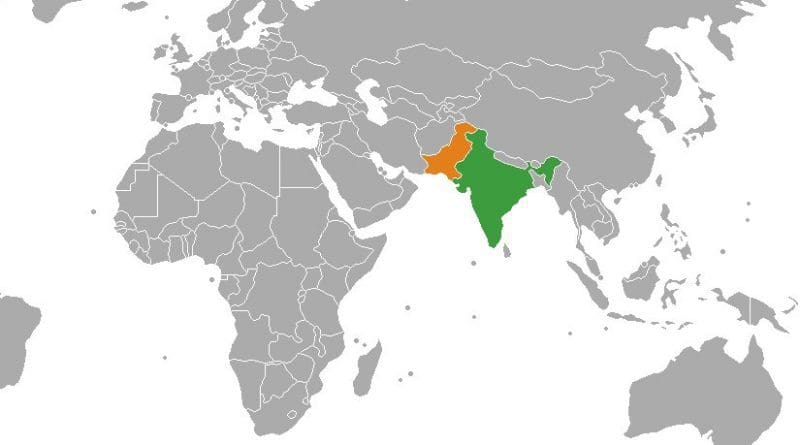‘Surgical Strikes’ Should Become Norm Against Errant Pakistan – OpEd
By Cecil Victor*
“Surgical strikes” by the Indian military visited upon Pakistani terror launchpads in Pakistan-occupied Kashmir in the dark hours of Thursday should become standard operating procedures rather than the exception.
The mathematics of counter-insurgency demands it.
Such a doctrine carries a promise of multiple cascading advantages. The Indian Army knows that the archpriests of guerrilla warfare, China’s first Chairman Mao Tse-tung and the charismatic Latin American Ernesto Che Guevara (even T.E. Lawrence — Lawrence of Arabia fame), in their independent and largely separated in time and location empirical studies on their type of warfare had pointed to the disproportionately high number of security forces required to neutralise one guerrilla fighter.
The ratio ranged from 50:1 in difficult terrain like dense forests or even 20:1 that the British used to curb the Malayan emergency. This means that if one infiltrator manages to cross the Line of Control, India would need up to 50 troops to find and neutralize him. If they are in groups of four to six as happened in Pathankot and Uri, the immediate requirement for quick neutralization would be between 200 to 300 security personnel. The prolonged exchanges of fire in nearly every instance points to both a paucity of manpower as well as abundant caution in the cleaning-up phase because of unpleasant experience of booby-trapped bodies.
In short, in a manpower-intensive kind of warfare that counter-insurgency is, we are unable to shape the battleground according to our wishes and requirement as per our current counter-infiltration strategy.
Conversely, in a surgical strike of the kind executed by the Indian Army on the night of September 29 India was in total control from which launchpads to hit, how to get in and how to get out without suffering casualties. All this was accomplished by Special Forces who went in without helicopters that are vulnerable to rifle fire from the ground.
Five widely dispersed specially camouflaged launchpads were destroyed. Thirty-five Pakistani dead bodies were counted and it is estimated that an equal number were pulverized by the flamethrowers and rocket propelled grenades.
Among the dead were nearly a dozen Pakistan Army personnel whose close proximity (cheek-by-jowl) to the terrorists and presence in the launchpads indicates their role as masterminds and facilitators.
The fact that the attack was executed by about 200 Indian soldiers and everything was over within four hours brings to the fore the cost-benefit of such an operation.
—Among the multiple cascading advantages that have emerged from this surgical strike (no harm irritating the Pakistanis by using this formulation) is that Pakistan has swiftly wrapped up more than a dozen training camps/launch pads from Pakistan-occupied Kashmir and shifted them closer to the Pakistani Punjab border. This shows that they were Pakistani nationals because if they were so-called “Kashmiri freedom fighters” they would have been left to die in much the same manner in which the Pakistan Army Inter-Services Intelligence abandoned the Shia fighters of the Northern Light Infantry (drawn from PoK) that were used to infiltrate into the Kargil salient in 1999 dressed in civilian kurta/pyjama.
—India has found the panacea to counter the Chinese stratagem of using nuclear weapons to deter a conventional response to attacks by highly trained Pakistanis posing as jihadi fighters.
—Pakistan cannot sustain its gambit of deniability in the face of the evidence that will very likely be unveiled before diplomats posted in New Delhi.
—Pakistan’s promise at the UN General Assembly that it would provide every means to help “Kashmiris” secure their desire for “freedom” lies dented and discredited.
—Several psychological issues have emerged that can be pursued with profit. Enumerating them here would render them inert.
Finally, it has taught Indian military commanders that overdependence on static defences leads to complacency and a syndrome of casualness and carelessness that has allowed Pakistan to successfully breach our defences time and again.
For many years Pakistan has been trying to create conditions to convert Kashmiri unrest into a liberation scenario through the infiltration of sleeper cells and pre-positioning of warlike stores, weapons and ammunition. From Hillkaka several years ago and many other places later Indian security forces have discovered caches and underground accommodation for as many as 40 personnel.
It is not an accident that there is an element of multiples of ten involved. Both Pakistan and India use this format to structure their conventional land forces. Forty is the number that comprises a platoon strength.
Returning to the empirical studies of Chinese chairman Mao, of Ernesto Che Guevara and of Lawrence of Arabia it is stated that “ratio of space to forces” plays a crucial role in guerrilla warfare. Hence the 50:1 calculus. If Pakistan is able to mobilize 40 persons who could use these dumps to hide and arm themselves the “enemy behind the lines effect” would be catastrophic.
The manner in which the strike force collected local intelligence can and must be applied to supplement the static defences. Using dogs as terrestrial eyes and ears should be coalesced into a more effective defence of which sanitizing the hinterland on the other side of the fence/reconnaissance/surveillance gadgetry is an integral part.
Hence surgical military operations (not all the time but at a time and place of our choosing) must be made the norm.
*Cecil Victor is an Indian military analyst. Comments and suggestions on this article can be sent on: [email protected]

